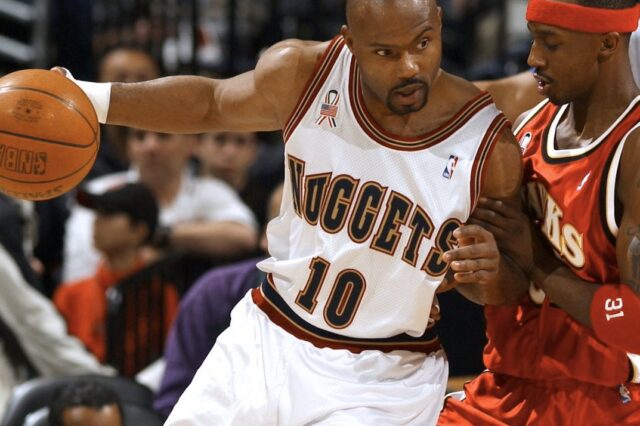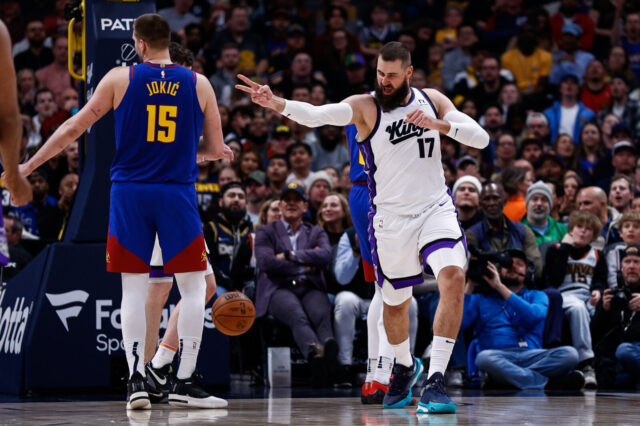Jake Rauchbach coached at the collegiate level, founded The MindRight Pro Program and trained numerous professional and Olympic athletes. Now, Rauchbach provides high performance analysis on the NBA and college basketball and serves as the Player Performance Specialist for Temple University's men's basketball team.
In the 2015-2016 season, Will Barton took impressive steps forward in his progression as a player. After coming over from the Portland Trailblazers mid-season, Barton’s minutes, points, steals, rebounds, assists, and three-point percentage all increased. Now, in his second full season in Denver, Barton appears to be improving incrementally with parts of his game but also lagging behind with others, namely on the defensive end.
In previous pieces, we have analyzed the strengths and weaknesses of Nuggets’ players and suggested ways for improvement. We will do the same for Barton, plus expound upon ways for him to expedite his performance. First, let’s discuss the mechanics of player performance.
Players tend to excel in certain areas of the game and struggle with others. The traditional way of looking at player development was to work harder and push harder for X amount of hours a day until improvement was generated. This worked for some guys, like the Kobe Bryants and Michael Jordans of the world, whose focus was already laser tight and who seemed to seamlessly improve. However, for others, the push, push, go harder philosophy was an inefficient method for improvement, and the ends didn’t always justify the means. Unlike the great ones whose work directly resulted in substantial improvement, for the other subset of players, that same work did not always allow them to make the breakthroughs in their games that they desired. The reason is that these players were likely blocked on the unconscious awareness, or muscle memory level. Mental and emotional blockages from past experiences, on or off the court, were blocking them from leveling their games upwards either incrementally, and or exponentially.
Take for example the Nick Anderson’s free throw debacle in the 1994-95 playoffs, where Anderson’s Magic were facing off against the Houston Rockets of Game 1 in the Finals. Anderson missed four consecutive win-sealing free throws. The Rockets ended up stealing that game and sweeping the series. The following season, self admittedly due to not being able to get over the experience the year prior, Anderson’s FT% plummeted from 70% to 40%. Additionally, look at the Pistons’ Andre Drummond. His form is relatively sound and he puts in the work. Why, then, has he not been consistent over the course of his career? A career 39% free throw shooter, Drummond has tried just about everything, including hiring a shooting coach to improve. For Drummond, there likely is another deeper element preventing him from normalizing his free throw percentage. Head Coach Stan Van Gundy seems to have an inkling of what that is. He told Tom Haberstroh of ESPN, "I've had Shaq, Dwight and now Andre," Van Gundy says. "It's a hard thing made even harder by the fact that these guys are great athletes who are used to having incredible success, and then there's one thing that they just don't do well, and I think it seeps into their mindset."
Barton may have little in regards to performance impediments surrounding his foul shooting, but some may exist regarding his defensive prowess and certain areas of his offensive game. Now, let’s break down his game.
Statistics: 13.9 ppg, 3.4 apg, 4.7 rpg, 44% FG, 76% FT, 38% 3PT (42 Games)
Strengths
Offensive End
Isolation – One of Barton’s greatest strengths is with his one-on-one game. He is shifty and constantly keeps his defender off balance, using an array of moves to free himself for scoring opportunities. The in and out, “hands up” hesitation crossover he employs against the Mavericks’ Dorian Finney-Smith, as seen below, to free himself for a floater, is a great example of this. He ranks second in the league in scoring efficiency in ISOs shooting 66% from the field.
Hand Off – Barton is very good in stationary hand off situations, where he ranks in the 94th percentile in the league. He has a great scoring feel and often will catch his defender sleeping and blaze off the hand off to create space for his shot. In the clip below, Bojan Bogdanovic turns his head for an instant, Barton reads this, and that’s all he needs to get a step on around the handoff for his pull up in the lane.
Defensive End
Isolation Defender – Barton ranks in the 97th percentile in the league with individual defense. He is only giving up .5 points per possession. Barton again leans on his quickness and wiry frame to pester defenders, as he does against Washington’s Bradley Beal in the clip below.
Off Screens – When guarding his man through and around screens, Barton does a good job staying connected. Barton ranks in the 69th percentile in the league, allowing .83 points per possession, with the opposition shooting just 41% against him. Take a look at how Barton chases the Knicks’ Justin Holiday through a gate play, effectively deterring a top of the key three-point attempt.
Weaknesses
Offensive End
Spot Up Scoring – Barton is a hard right hand driver, and when catching off of spot up plays, he struggles driving it left. Barton ranks in the 1st percentile in the league, averaging .35 points per possession on in this type of action. Take a look at how Barton gets in the lane going left against the Clippers but cuts his drive off short in order to to come back to his right hand. He ends up taking a contested, wrong footed fade away over Jamal Crawford.
Defensive End
Pick and Roll (Ball Handler) – From this year to last year, Barton’s P&R defense has decreased markedly. Last season, Barton ranked in the 51st percentile in the league, giving up just .82 points per possession. This season, he ranks in the 8th percentile in the league, giving up 1.07 points per possession. Barton’s drop off is even worse when the P&R action is from the right side of the floor. Last season, he ranked in the 46th percentile, this season in the 0 percentile. This means he is the worst player in the league in these situations. Barton has all of the tools to be a great pick and roll defender. However, he seems to lack the focus and sense of urgency needed to be great, which is evidenced in the clip below.
Post Up Coverage – Barton also struggles guarding the post, where he ranks in the 16th percentile in the league and is giving up 63% shooting from the field. Luckily, Barton only finds himself down low 6% of the time on defense. Look at how Kevin Durant pretty much walks Barton towards the basket for an easy fade away finish in the clip below.
Barton’s Player Development: Barton has clearly improved his offensive efficiency this season when compared to last, with his field goal and three-point percentage increasing from 43% to 45%, and 35% to 38%, respectively. However, his defensive numbers have slipped. Building upon Coach Van Gundy’s comments, optimal player performance is a synthesis of on court skill work and unconscious or muscle memory re-patterning. The combination of which could have the effect of allowing a player the chance for large scale performance improvement. Eliminating any unconscious barriers affecting Barton could help the Nuggets’ guard improve focus and court awareness.
This could allow him to see plays developing faster, increasing his reaction time, improve his offensive game and enhancing his defensive efficiency. For slower thinkers who don’t quite grasp these methods, take a look at high performance energy psychology techniques shown to improve player performance used by Olympic Sprinter Braylon Taplin, and College World Series MVP Jorge Reyes to prime performance. Several high level NBA players are implementing similar techniques. Combining skill-work and film study with elimination of his unconscious blocks could give Barton the chance to take the next big step in his progression as a player.
* All statistics are courtesy of Synergy and Basketball-Reference.com and are current as of February 22, 2017.


